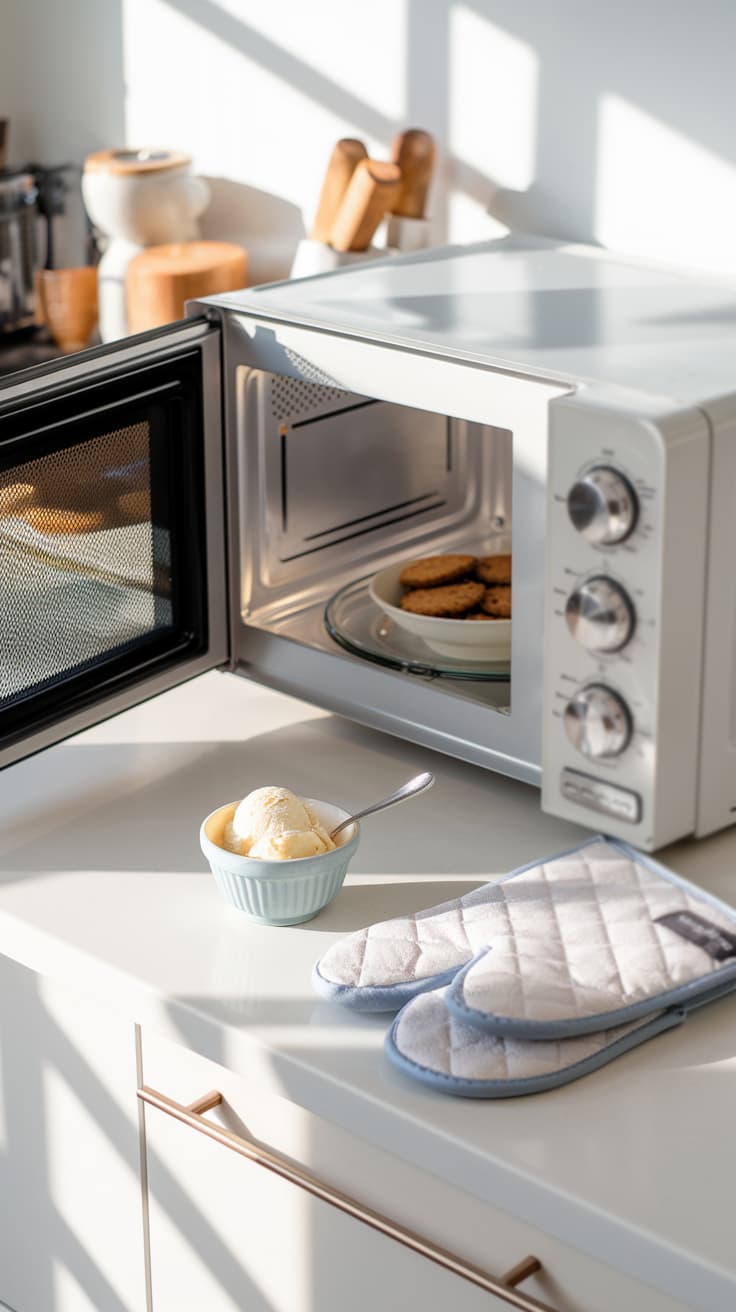Can You Microwave Edibles?
Microwaves are the ultimate kitchen shortcut. Whether you’re reheating last night’s dinner or making an infused mug cake in minutes, microwaving is all about convenience. But what happens when you throw edibles into the mix? Can you safely microwave them without ruining the potency, flavor, or texture?

key takeaways
Is it OK to Microwave Edibles?
Sure, you can. But should you? Probably not. Microwaves heat things up fast and unevenly. This can mess with the texture and taste of your edibles, and even how strong they are.
In most cases, microwaving won’t completely destroy your the THC or CBD in your edibles, but improper heating can affect their potency andn texture. Fat-based infusions like butter or oil provide a protective buffer, which helps preserve cannabinoids during reheating.
Can You Make Edibles in the Microwave?
Yes, sure! The microwave is perfect to make fast, single-serving recipes. Think in stuff like a cannabis infused Mug Cake, for that you only need to combine infused butter or oil with cake ingredients in a mug. Microwave for 1-2 minutes for a quick dessert.
Best Practices for Reheating Edibles in the Microwave
- Use Low Power Settings: Start with 50% power to gently warm your edibles without overheating.
- Moisture Matters: Cover baked goods with a damp paper towel to prevent them from drying out.
- Time It Right: Heat in short bursts (10-15 seconds) and check frequently.
Foods to Handle with Care
- Brownies and Cookies: Microwaving can make them soggy. Try using an oven for better texture.
- Gummies or Candies: Avoid microwaving—they can melt and lose their shape.
Better Alternatives for Reheating Edibles
If you want to preserve the quality and potency of your edibles, consider these alternatives:
- Oven: Use a low-temperature setting (250°F or lower) to gently reheat baked goods.
- Stovetop: For sauces, oils, or butter, warm gently over low heat.
- Sous Vide: This method offers precise temperature control, ensuring your edibles are evenly heated without risking potency loss.
Pros and Cons of Microwaving Edibles
| PROS | CONS |
|---|---|
| Quick and convenient. | Not suitable for decarboxylation. |
| Ideal for reheating small portions. | High heat risks degrading cannabinoids. |
| Easy for experimenting with single-serve recipes. | Uneven heating can impact potency and texture. |
So, next time Imagine the microwave like that buddy who always delivers, but sometimes in a surprising way. Don’t take me wrong, they are great for a quick fix, but if you have the time, cooking in the oven generally produces better results. It’s a more thoughtful approach to reheat those edibles.
Now, spill the tea! What’s the funniest thing that’s happened to you while reheating edibles? Oh, and don’t forget to check all our delicious canna recipes to give you some inspiration!
